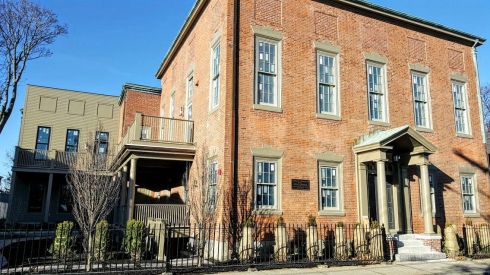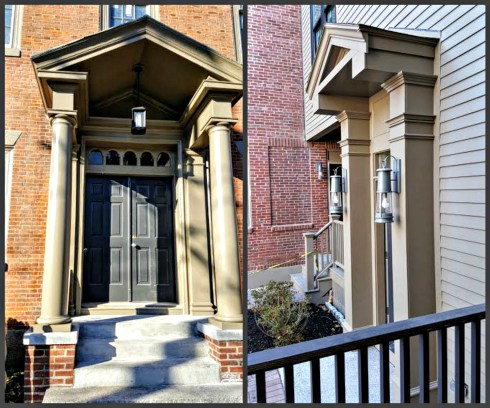One of the projects that my husband’s architectural firm has been working on is coming to a close, so I took advantage of a holiday open house to go in and see how the much-altered former Home for Aged Men/Sons of Poland/ Emmerton Hall of the House of the Seven Gables was being transformed into six condominiums. I like my title, so I’m keeping it–but it is incorrect: 114 Derby Street is actually a building on the cusp of leading ten lives (if you count all the new units individually). It was built in 1806 for Salem sea Captain Joseph Waters, and remained a single-family residence until 1877 when the great philanthropist John Bertram purchased it for his newly-established Home for Aged Men. After the Bertram Home moved to the Common (where it remains), the Sons of Poland transformed 114 Derby Street into a fraternal headquarters and social club, and it continued to serve in the latter function, essentially, when the House of the Seven Gables Settlement Association purchased it in 1966 and renamed it after its founder, Caroline O. Emmerton. As envisioned by Emmerton, the Gables was an institution that was founded to realize the joint goals of preservation and settlement, and its social activities had outgrown the constraints main campus across the street. Everyone in Salem consequently refers to this building as the “Settlement House”, though that identity was relatively short-lived in the context of its entire history. The Frank Cousins photograph below, taken in the early twentieth century when the house was the Bertram Home for Aged Men, shows some semblance of its original Federal appearance.



The Waters House c. 1912 (Urban Landscape Collection, Duke University Library) and today. Third-floor ghost windows on both the main house and the 1983 addition of 114 Derby Street are reminiscent of the house’s Federal past.
Every “life” brought major architectural changes to the old Waters House, but it appears that the twentieth-century alterations were particularly extensive: the building’s exterior and interior were completely transformed by the Sons of Poland in the 1930s, and the Gables added the present addition to the back and side in 1983 (which everyone I know disdains but now looks pretty cool). The mission of the Gables has evolved over the last decade or so, and consequently its trustees made the decision to sell the building last year.This last (maybe!) evolution of 114 Derby Street has been pretty speedy, and the six (sold-out) residences should be ready for occupancy this spring.


The addition s) and all those institutional uses mean that the new condominiums all (I think all!) have their own entrances.








Old stairwells and New spaces being carved out of the Waters/Settlement House: as you can see, the units are quite large (1-3 bedrooms with expansive living/dining spaces) and include parking out back.



































































































































